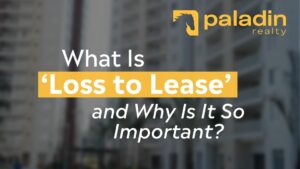Sign up for our "Paladin Insights" Newsletter for monthly commentary on real estate market trends.
Our investment offerings tend to oversubscribe quickly. So, we encourage you to join our waitlist for new offerings. There is no obligation to invest.
The number one rule of investing: protecting your downside. We've talked about it before. We've made over 90 value-added apartment investments across the US since 1995. A little over 15,000 units, just under $800 million of total size. And half of these, 45 were in Southern California. And that's the market that we're primarily focused on right now. I'm knocking on wood as I say this, we have never lost a dime of capital, in this market, in 30 years. And why is that? What has accounted for that, that zero loss record over a three decade time span? The main reason is, we are completely focused on downside protection. We want to make sure our invested equity is well protected if there's a recession or other major market down cycle. And there's three ways that we do this. All three of these work together to provide downside protection for what we're doing here in Southern California. First and foremost is how we capitalize each deal, which is generally conservative. We talked in a separate video about how debt, the impact of debt on investments and how debt amplifies the effects of project level economics. So, for example, if an asset declines in value by 20%, if you own it at 100% equity, you obviously lose only 20% of value on that. But if you are leveraged at 70%, which has been a typical leverage level across the US, for most value-added apartment investors, you would have lost two thirds of your invested equity.
So, contrast that to our approach. We generally favor conservative amounts of leverage. On our last four acquisitions that we've made, it's been 50% or less. Every one of those, we capitalized with fixed rate debt. We don't want to take any interest rate debt. And as importantly, we don't want a loan coming due in the middle of our business plan. So we always make sure that our loan durations, not only match the business plan, but give us a little cushion beyond that in case the market throws us a curve ball and we have a challenge in harvesting the investment. So, deal capitalization is first and foremost, the way that we protect our downside. The second is that we target assets with pricing power. What do I mean by that? So, in an apartment investment, there's a concept called loss to lease. Basically, this is the difference between where current rents are and where market rents have the potential to be. And we typically target a spread of about 30% there. And what that provides us is considerable pricing power, if rents decline. If our current rents are 30% below market, if the market goes down 10%, we still have a 20% loss to lease cushion that allows us a certainty of an income stream.
We're not facing an environment where we're having to reduce rents. And in fact, if we're buying assets here in Southern California that are subject to the statewide rent control, which is called AB 1482. In an inflationary environment like we are currently in, we can raise rents in a downturn. So let me repeat that. We can raise our rents in the middle of a recession with an AB 1482 asset if you are targeting a loss to lease as high as we target of at least 30%. AB 1482 is the statewide rent control that went into effect almost two years ago in Southern California. It applies to any property in the state that meets certain size thresholds. So I think it's at five units or more. And if that property is not subject to a more restrictive local rent control, then the statewide rent control applies. And, it provides a lot of tenant protections, but it also provides, I think, some appropriate abilities for landlords to be able to raise rents, particularly in inflationary times, and to be able to upgrade properties through substantial renovations. So the pricing power that we get, with the type of assets that we target is very, very important. It's one of the reasons why, during market downturns, our net operating income at least remains stable, if not grows during that timeframe because it's still continuing to capture that loss to lease as units turnover.
And then third, equally important to the others is how we approach market selection and product focus. In our case, it's focusing on Class B and C, older, smaller apartment buildings in Southern California. We've talked before about the unique aspect of the LA market. It's one of the largest, most dynamic markets in the country, but it's faced a chronic shortage of affordable housing for more than a half century. And it's one of the least affordable housing markets in the US to own a home. Only 46% of Angelenos own their home, compared to nearly two thirds across the US. And in addition, Class A rents, the new product, the new supply. Those rents are typically twice the rents in a Class B or a class C property. And so what these conditions create is very resilient demand from what I would describe as a permanent renter class that has very few affordable housing options that are close to the jobs. And all of these factors create a huge competitive advantage for Class B and C properties. They weather recessions very well when there's a downturn because renters move out of Class A space into Class B and C seeking those more affordable rents, and they want to be able to stay close to the jobs and not have to commute 2 hours to the jobs.
Occupancy - if you look at the last two recessions that we've had, which were among the deepest on record over the last hundred years, occupancy in Class B and C properties remained steady at between 95% and 98%. Rents dropped by between 5% and 10% during those downturns, but they quickly rebounded. So you have a resiliency of occupancy and demand from a permanent renter class that doesn't have any other choice. So summarizing, these three factors all work together: conservative use of debt, targeting assets with pricing power, a big loss to lease, and a market focus and a product type focus on B and C properties here in Southern California. Of all the investments that we've done, across $6 billion of real estate, in eight countries over 30 years, what we're doing here in Southern California is one of the most cycle resilient strategies that we've seen. And, in my view is an excellent defensive cash flow oriented strategy, especially during times of economic uncertainty like what we've been experiencing this year and I think what we will be experiencing over the next year or two.



